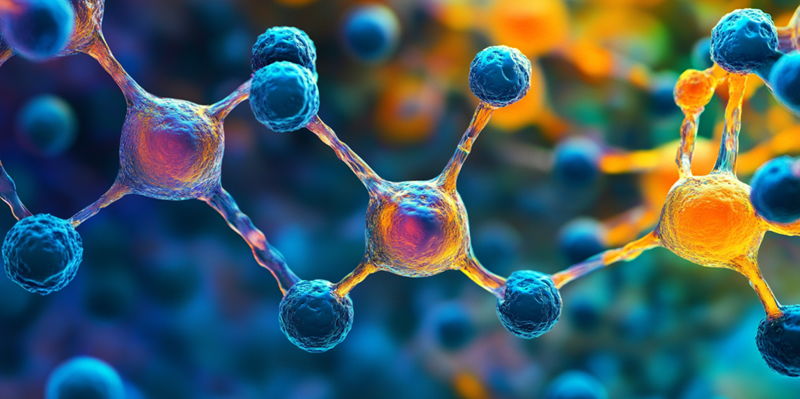An innovative method for data storage utilizing synthetic polymer chains has been developed by researchers from Seoul National University. This new technique presents a promising alternative to traditional storage media, potentially revolutionizing the way data is stored and accessed. The key advancement lies in the ability to directly access specific data bits without decoding entire polymer chains, significantly enhancing storage density and stability. This breakthrough method transcends the limitations of conventional data retrieval techniques, such as mass spectrometry (MS), which typically require sequential reading of the entire polymer chain, thereby limiting the length and storage capacity of these chains.
Challenges in Traditional Data Storage Methods
The Growing Need for Efficient Long-term Storage
The need for efficient data storage solutions continues to grow exponentially as vast amounts of information are generated daily by businesses, quality assurance processes, and product tracking. However, storing such massive datasets long-term demands substantial space and energy, posing a significant challenge. Traditional methods, like those relying on DNA, have often been considered due to their high information density. Yet, synthetic polymers emerge as viable alternatives, offering simpler synthesis and greater stability under harsh conditions compared to DNA. These polymers come with defined sequences, providing a structured way of storing data that could potentially replace conventional methods if decoded effectively.
Limitations of Current Decoding Techniques
Traditional decoding methods for synthetic polymers, such as MS and tandem-mass sequencing (MS2), face inherent limitations. They require reading the entire polymer chain, which is a significant drawback analogous to having to read an entire book rather than flipping to the relevant page. This sequential reading approach also restricts the size of the molecule, making it challenging to extend the storage capacity. The limitations of current methods have created a pressing need for more efficient and targeted ways to decode synthetic polymer chains, without being bogged down by the constraints of sequential reading. Overcoming these hurdles could revolutionize the data storage landscape, significantly increasing efficiency and capacity.
Breakthrough in Synthetic Polymer Data Storage
Dr. Kyoung Taek Kim’s Innovative Method
The research team, led by Dr. Kyoung Taek Kim, has made a breakthrough in synthetic polymer data storage by developing a method that overcomes traditional decoding limitations. They demonstrated this method by encoding their university address into ASCII code, translating it into a binary code sequence made of lactic acid (representing 1) and phenyllactic acid (representing 0). By integrating fragmentation codes containing mandelic acid at irregular intervals within the polymer chain, the chains could be broken down at these designated points when chemically activated. This led to the creation of 18 fragments of varying sizes, each of which was individually decoded. This innovative use of fragmentation codes allowed for specific bits of data to be accessed without needing to decode the entire polymer chain.
Advanced Decoding Through Specialized Software
To facilitate the decoding process, the researchers developed specialized software capable of identifying fragments based on their mass and end groups as determined by MS spectra. During the MS2 process, molecular ions were further broken down, allowing researchers to achieve a detailed analysis of each fragment. The fragments were then sequenced based on mass differences, and the entire sequence of the polymer chain was successfully reconstructed using a CRC error detection code. This method effectively surpassed the previous length limitations of polymer chains, allowing for greater storage capacity and efficiency. The ability to decode individual fragments without reading the entire chain represented a significant leap forward in synthetic polymer data storage technology.
Implications for Future Data Storage
Random Access to Specific Data Bits
One of the most notable advantages of this new method is the ability to enable random access to specific bits of data without the necessity of sequencing the entire polymer chain. For instance, in their research, the team successfully isolated and decoded the word "chemistry" from the encoded address sequence simply by recognizing the order of address components and their separation by commas. This capability of pinpointing and accessing specific data bits directly translates to vastly improved data retrieval speeds and efficiency. It also opens up new possibilities for the use of synthetic polymers in various fields requiring robust and reliable data storage solutions.
Enhanced Data Storage Density and Stability
Researchers at Seoul National University have created a groundbreaking approach to data storage using synthetic polymer chains. This innovative technology offers a promising alternative to traditional storage methods, potentially transforming how data is stored and accessed. The major advancement of this method is its capability to directly retrieve specific bits of data without the need to decode entire polymer chains, which greatly improves both storage density and stability. Unlike traditional techniques like mass spectrometry (MS) that require sequential reading of the entire polymer chain, this new method allows for direct access to specific data segments. This direct access method overcomes the limitations of conventional data retrieval processes, which can restrict the length and storage capacity of polymer chains. By circumventing these limitations, the new storage method could lead to more efficient and scalable data storage solutions, marking a significant milestone in the field of data technology.

